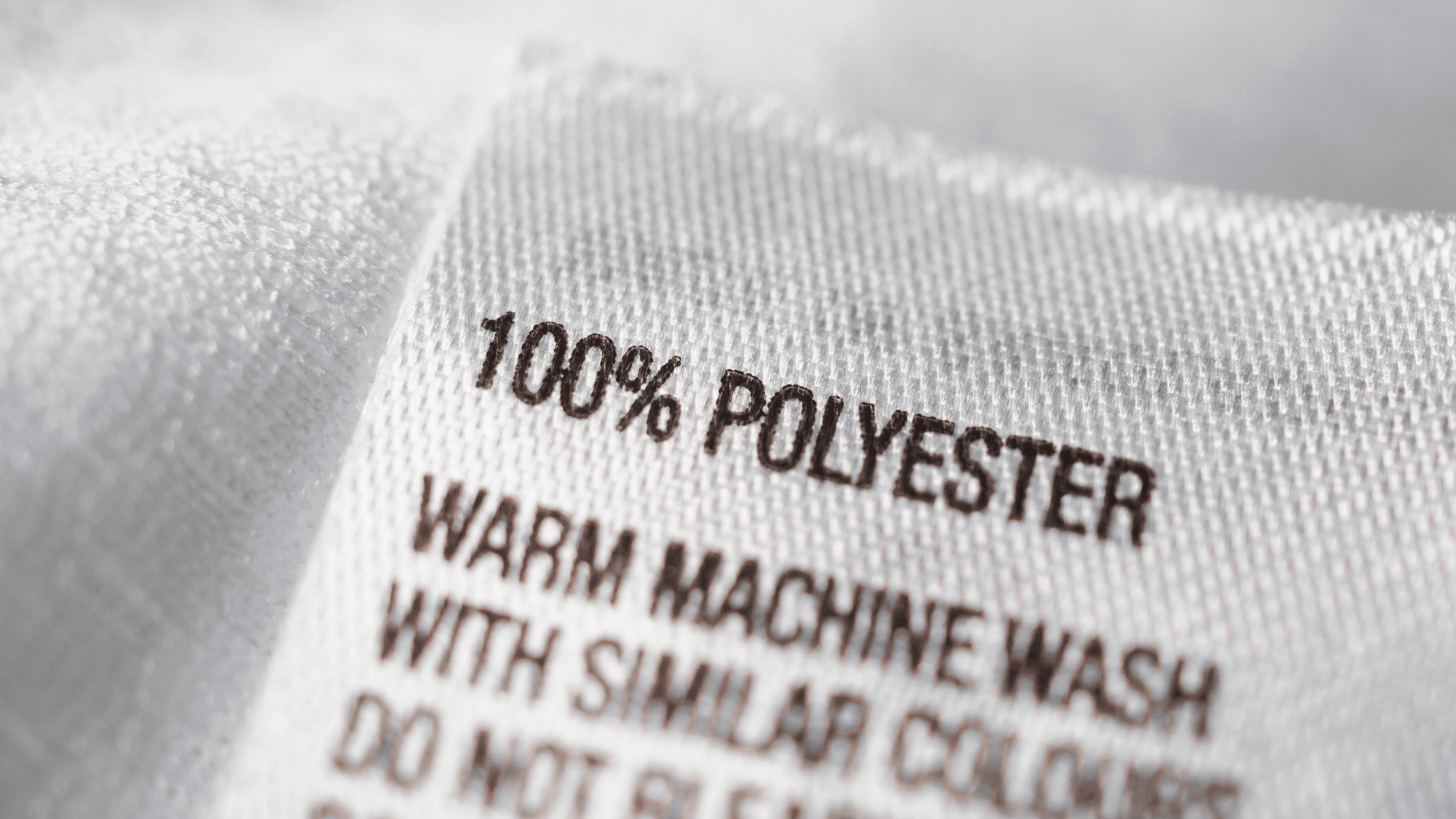Polyester is Making Both YOU and The Environment Infertile.

Polyester accounts for 54% of clothing products—it’s popularity stems from how easy and cheap manufacturers can create it. What does that process look like & how is it so toxic for us & the world?
HOW POLYESTER IS MADE:
- Create a monomer: PETROLEUM, YES PETROLEUM is extracted & then broken down into ingredients. Ethylene and p-xylene are extracted from petroleum, which are the two monomers needed for making polyester.
- Monomer to polymer: The monomers are then mixed with dimethyl terephthalate, creating the polymer polyethylene terephthalate (PET), which is the plastic in SODA/WATER BOTTLES.
- Extrude: Once formed, PET is extruded so it can dry and harden

- Melt and spin the pellets: Once cut up into small pellets, the PET pellets are then melted again, and the molten PET is extruded through spinnerets, which are tiny holes, to form thread. After these threads cool, they harden into polyester fibers.

-
Polyester yarn: The fibers are twisted into polyester yarn and are ready to knit into fabric. The fibers can be cut or further altered with various chemicals to achieve specific results.

There's no way any reasonable person would think that wearing a heated and reheated plastic is in any way healthy? The main reasons polyester is so widely adopted:
- Very cheap to produce
- Durable
- Wrinkle & stain-resistant
- Stretchable
- Breathable
HOW IT POLLUTES THE WORLD:
In 2015, polyester produced for clothing emitted 282 billion kg of CO2 – nearly three times more than for cotton. Link to article "Factories producing polyester without wastewater treatment systems can release potentially dangerous substances including antimony, cobalt, manganese salts, sodium bromide and titanium dioxide into the environment" An estimated half a million tons of plastic microfibers are shed into the oceans annually during the washing of plastic fibers such as polyester, nylon, or acrylic. Link to article
HOW IT IS TOXIC FOR US:
Fish, shellfish, and other aquatic animals accumulate microplastics, which build up toxins in their bodies. 60% of globally studied fish contained microplastics. Guess who eats those fish (besides bigger fish)?
https://sciencedirect.com/science/article/abs/pii/S0025326X20307992?via%3Dihub
Oil tycoons Exxon & Shell spend billions building 'cracking' facilities that produce the materials for plastic products such as polyester. These facilities emit volatile organic compounds (VOCs) that cause many health issues, including kidney & liver damage.


POLYESTER CARRIES CARCINOGENS:
- Antimony - released during production into our air & waterways. Causes cancer, and skin, liver, heart, and kidney issues
- PFOA - makes polyester waterproof. Linked to cancer, thyroid disease, and reproductive issues
- Formaldehyde - used as a finishing agent in production. Causes respiratory issues & linked to cancer
- Perfluorochemicals (PFCs) - makes polyester stain-resistant. Causes reproductive issues & liver damage
REDUCES SPERM COUNT IN MEN:
When wearing synthetic materials such as polyester, the heat gets trapped, which negatively affects men's testes.
https://pubmed.ncbi.nlm.nih.gov/8886260/
https://pubmed.ncbi.nlm.nih.gov/1503251/
AFFECTS OUR IMMUNE SYSTEMS:
Polyester can trap sweat & bacteria, which leeches onto our skin. This can cause irritation, infections, and inflammation. This is why everything from The Regenaissance is derived from natural fibers.
Cheers,
Ryan
- Tags: consumer-advocacy environmental-toxins fertility health-conscious microplastics textile-industry
0 comments




